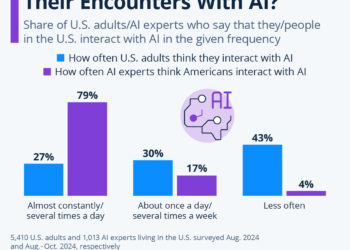Spatial computing represents a significant shift in how we interact with digital environments, blending the digital and physical worlds seamlessly. Whether for business applications, gaming, or education, understanding how to delve into this field can be both exciting and daunting. This guide will illuminate your path to getting started with spatial computing.
Understanding Spatial Computing
Spatial computing refers to the use of technology to enable interaction with digital content in the physical space. Key elements include:
- Augmented Reality (AR): Overlays digital information onto the real world.
- Virtual Reality (VR): Creates entirely immersive digital environments.
- Mixed Reality (MR): Combines both AR and VR, allowing real and virtual elements to interact in real-time.
- 3D Mapping: Utilizes spatial data to create three-dimensional representations of locations or objects.
Why is Spatial Computing Important?
- Enhanced User Experiences: Users can interact with digital content in more intuitive ways.
- Value in Various Industries: From healthcare and education to entertainment and real estate, spatial computing offers innovative solutions.
- Future of Work: As remote work becomes increasingly prevalent, spatial computing can facilitate better collaboration through virtual environments.
Getting Started: Tools and Technologies
To embark on your spatial computing journey, familiarize yourself with essential tools and platforms.
Common Hardware
-
Head-Mounted Displays (HMDs):
- Oculus Quest 2
- Microsoft HoloLens
- HTC Vive
ADVERTISEMENT - Mobile Devices:
- Latest smartphones equipped with AR capabilities (e.g., Apple iPhone, Android phones with ARCore)
Key Software and Platforms
- Unity: A powerful game engine that allows developers to create AR and VR applications.
- Unreal Engine: Great for high-fidelity visual experiences in spatial computing; suitable for both games and enterprise applications.
- ARKit and ARCore: Development frameworks for creating AR experiences on iOS and Android, respectively.
Learning the Basics
Online Courses and Resources
- Coursera: Offers courses in AR and VR, helping you grasp the concepts and technology involved.
- edX: Provides certificates in XR technologies.
- YouTube Tutorials: Free resources can show practical implementations and coding tips.
Recommended Books
- "The Fourth Transformation" by Brian McCarthy and Paul Boucher: A deep dive into the impact of spatial computing on various sectors.
- "Masters of Doom" by David Kushner: While focused on gaming, it provides insights into the roots of interactive technology.
Community Engagement
Join forums and online communities dedicated to spatial computing. Platforms such as:
- StackOverflow: For developer questions.
- Reddit (r/augmentedreality, r/VR): For discussions and news.
- Meetup: Locate local groups focusing on AR and VR innovation.
Practical Applications to Explore
Developing Simple AR Apps
- Choose Your Platform: Decide whether you want to build for iOS, Android, or both.
- Start with Unity: Follow specific tutorials to develop a basic AR app using ARKit or ARCore.
- Test Your App: Utilize your mobile device for hands-on testing to troubleshoot and improve usability.
Experimenting with VR Content
- Create a VR Scene: Use Unity to craft a virtual space.
- Incorporate Interactivity: Add elements that the user can interact with, like buttons or moving objects.
- Gather Feedback: Share your VR experience with friends or online communities for constructive insights.
Tips for Success in Spatial Computing
- Stay Updated: Follow industry news via blogs and podcasts to keep abreast of new tools and trends.
- Practice Regularly: Dedicate time each week to experiment, simulate, and learn.
- Network with Professionals: Attend workshops and conferences focused on spatial computing to connect with other enthusiasts and industry leaders.
Future Trends to Watch
- Advancements in AI: Integration of AI will revolutionize interactions in spatial computing.
- More Physical-Digital Blending: Expect to see even more sophisticated ways to merge physical spaces with digital experiences.
- Expansion into New Sectors: Industries such as automotive, retail, and hospitality are increasingly adopting spatial computing technologies.
By following these guidelines, you can establish a firm foundation in spatial computing and embark on an exciting journey into the future of technology-enhanced interactions.





